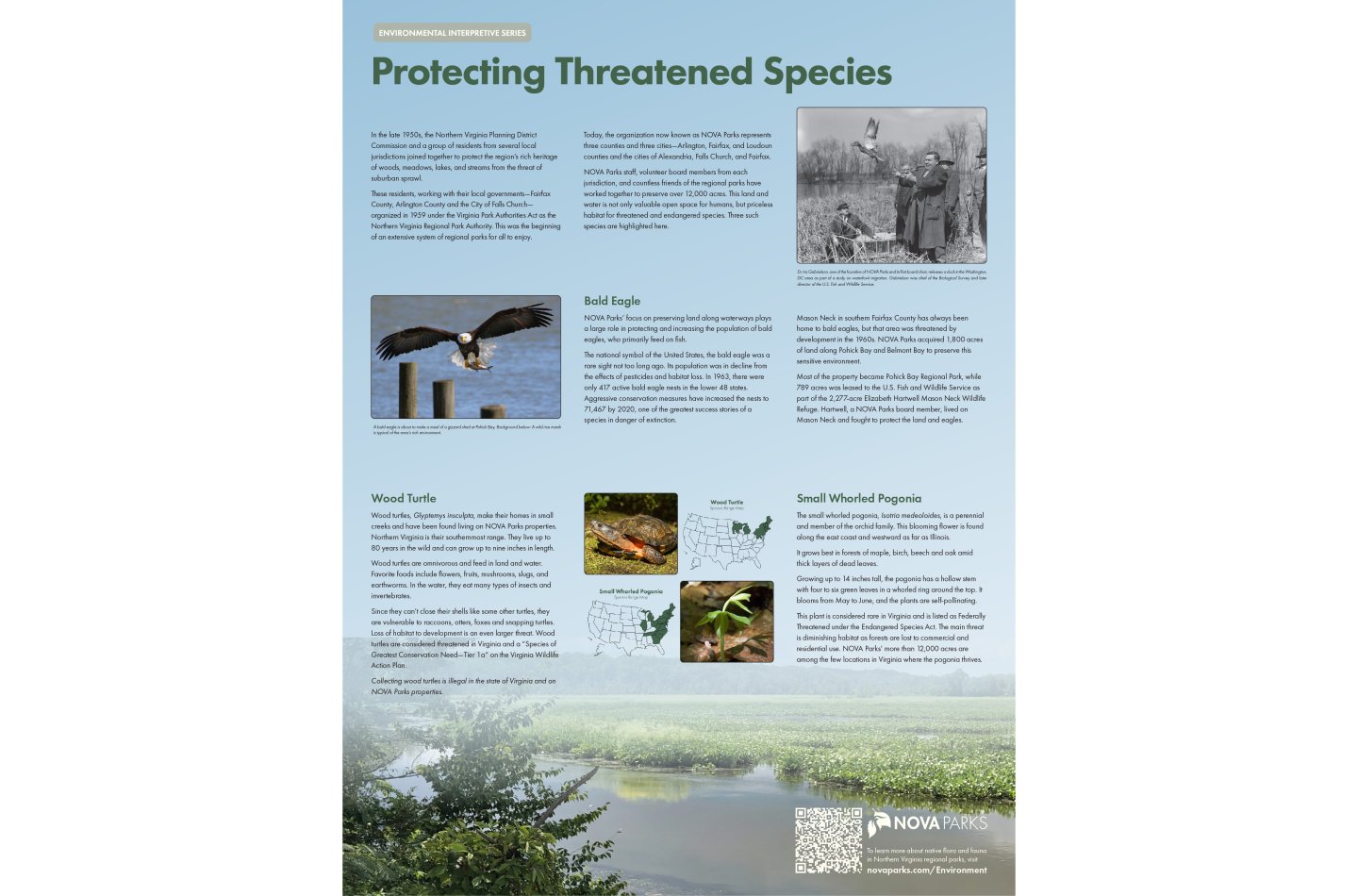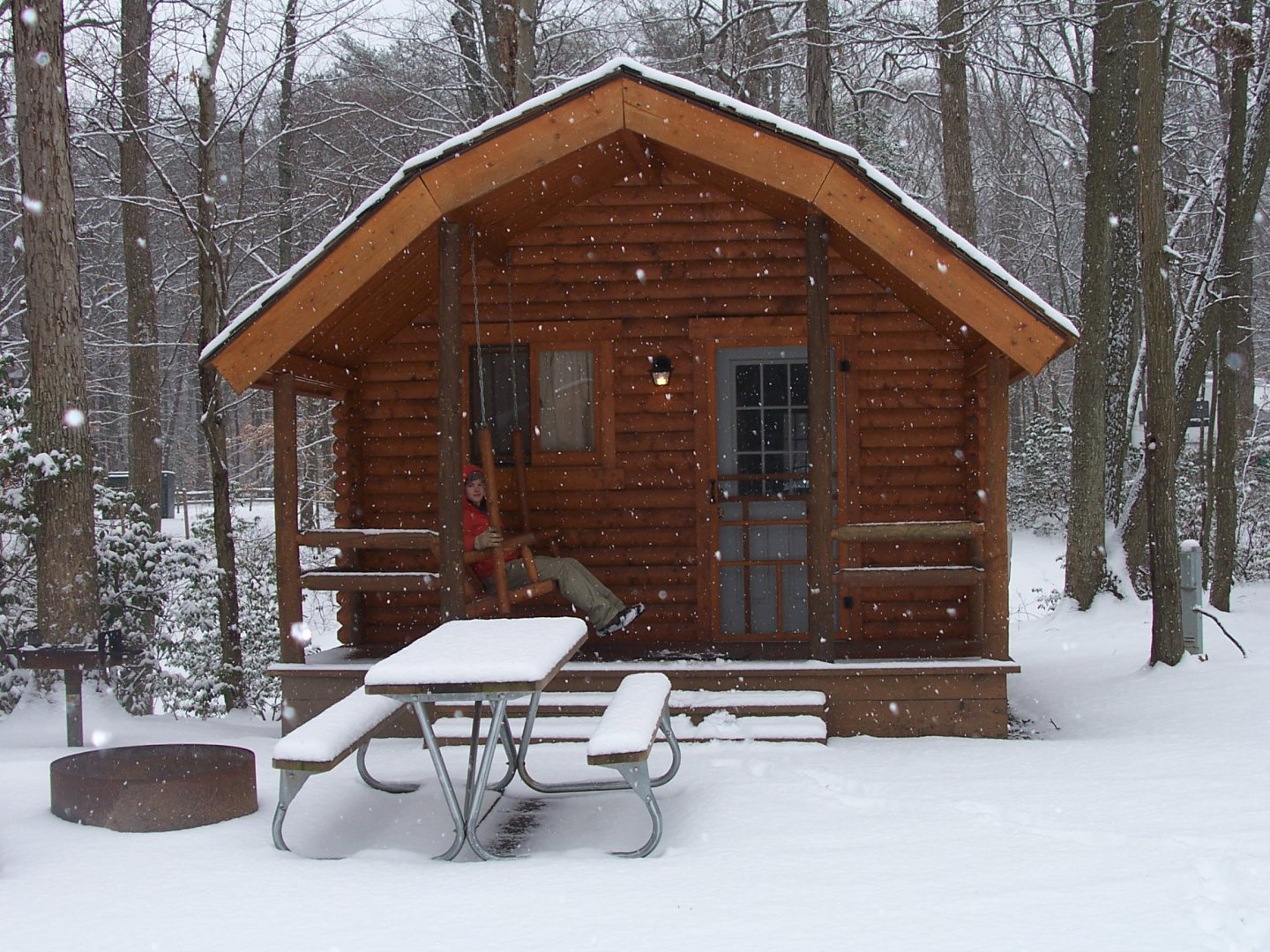Fountainhead Regional Park
Environmental Interpretive Series: Protecting Threatened Species

In the late 1950s, the Northern Virginia Planning District Commission and a group of residents from several local jurisdictions joined together to protect the region’s rich heritage of woods, meadows, lakes, and streams from the threat of suburban sprawl.
These residents, working with their local governments—Fairfax County, Arlington County and the City of Falls Church—organized in 1959 under the Virginia Park Authorities Act as the Northern Virginia Regional Park Authority. This was the beginning of an extensive system of regional parks for all to enjoy.
Today, the organization now known as NOVA Parks represents three counties and three cities—Arlington, Fairfax, and Loudoun counties and the cities of Alexandria, Falls Church, and Fairfax.
NOVA Parks staff, volunteer board members from each jurisdiction, and countless friends of the regional parks have worked together to preserve over 12,000 acres. This land and water is not only valuable open space for humans, but priceless habitat for threatened and endangered species. Three such species are highlighted here.
Bald Eagle
NOVA Parks’ focus on preserving land along waterways plays a large role in protecting and increasing the population of bald eagles, who primarily feed on fish.
The national symbol of the United States, the bald eagle was a rare sight not too long ago. Its population was in decline from the effects of pesticides and habitat loss. In 1963, there were only 417 active bald eagle nests in the lower 48 states. Aggressive conservation measures have increased the nests to 71,467 by 2020, one of the greatest success stories of a species in danger of extinction.
Mason Neck in southern Fairfax County has always been home to bald eagles, but that area was threatened by development in the 1960s. NOVA Parks acquired 1,800 acres of land along Pohick Bay and Belmont Bay to preserve this sensitive environment.
Most of the property became Pohick Bay Regional Park, while 789 acres was leased to the U.S. Fish and Wildlife Service as part of the 2,277-acre Elizabeth Hartwell Mason Neck Wildlife Refuge. Hartwell, a NOVA Parks board member, lived on Mason Neck and fought to protect the land and eagles.
Wood Turtle
Wood turtles, Glyptemys insculpta, make their homes in small creeks and have been found living on NOVA Parks properties. Northern Virginia is their southernmost range. They live up to 80 years in the wild and can grow up to nine inches in length.
Wood turtles are omnivorous and feed in land and water. Favorite foods include flowers, fruits, mushrooms, slugs, and earthworms. In the water, they eat many types of insects and invertebrates.
Since they can’t close their shells like some other turtles, they are vulnerable to raccoons, otters, foxes and snapping turtles. Loss of habitat to development is an even larger threat. Wood turtles are considered threatened in Virginia and a “Species of Greatest Conservation Need—Tier 1a” on the Virginia Wildlife Action Plan.
Collecting wood turtles is illegal in the state of Virginia and on NOVA Parks properties.
Small Whorled Pogonia
The small whorled pogonia, Isotria medeoloides, is a perennial and member of the orchid family. This blooming flower is found along the east coast and westward as far as Illinois.
It grows best in forests of maple, birch, beech and oak amid thick layers of dead leaves.
Growing up to 14 inches tall, the pogonia has a hollow stem with four to six green leaves in a whorled ring around the top. It blooms from May to June, and the plants are self-pollinating.
This plant is considered rare in Virginia and is listed as Federally Threatened under the Endangered Species Act. The main threat is diminishing habitat as forests are lost to commercial and residential use. NOVA Parks’ more than 12,000 acres are among the few locations in Virginia where the pogonia thrives.


